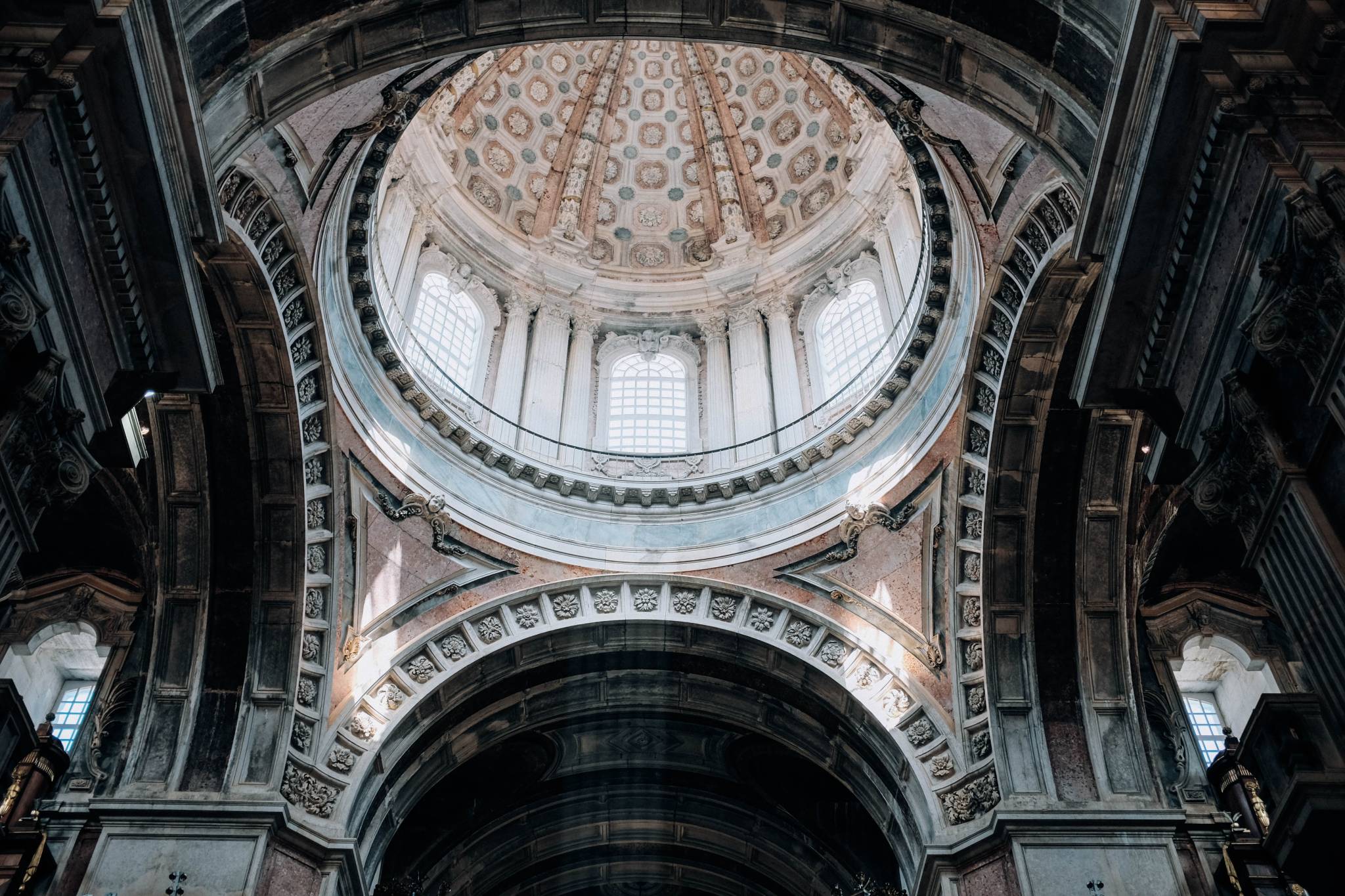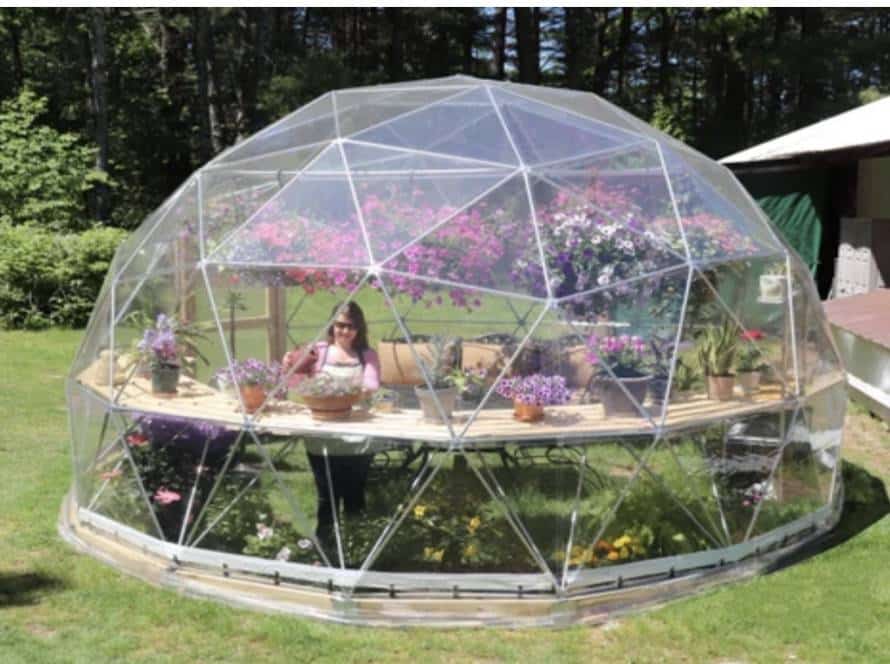Since ancient times, domes have been architectural marvels, displaying the skill and workmanship of civilizations throughout history. Masonry domes have a distinct place among the many dome building processes. These stone or brick constructions provide both strength and aesthetic appeal. In this article, we will look at the design and construction of these domes, as well as their historical relevance and technical principles.
Historical Importance
Masonry domes have a long history that stretches through centuries and nations. These domes have decorated countless renowned monuments, from the grandeur of the Pantheon in Rome to the splendor of the Hagia Sophia in Istanbul. The ancient Romans were forerunners in dome construction, inventing novel ways to build structures that have withstood the test of time. Also, to learn more about Mirrored domes, visit: https://domespaces.com/mirrored-domes/.
Construction Techniques
The construction of a masonry dome necessitates rigorous design, expert craftsmanship, and a thorough grasp of structural principles. Let’s look at the main phases of building a masonry dome.
Foundation: A robust and secure foundation is essential for any construction, including domes. The foundation must be able to hold the dome’s weight and transfer it to the ground without settling or failure.
Support Structure: A temporary support structure, often known as a centering or formwork, is created to give stability during building. The dome’s form is held by this framework until the masonry parts can sustain themselves.
Dome Construction: The dome is normally created layer by layer, beginning at the bottom and going upward. Each layer is made up of bricks or stones that have been put in a certain pattern, such as herringbone or radial. Mortar is used to connect the masonry pieces. The stonework progressively becomes self-supporting as the dome rises.
Key Elements: These domes combine crucial aspects to increase stability. These include horizontal bands known as courses or belts that provide strength. The use of ornamental elements, such as ribs or arches, not only provides visual appeal but also supports the structure.
Apart from its historical significance and construction processes, there are other characteristics that contribute to the ongoing attraction and usefulness of these domes.
- Masonry, whether stone or brick, is noted for its resilience and endurance. These domes may survive the test of time and last for decades if built and maintained properly. Masonry materials’ intrinsic strength gives exceptional resistance to weathering, fire, and other environmental problems.
- Masonry has great thermal qualities, which provide natural insulation. These domes are energy-efficient because they can adjust internal temperatures, keeping them cool in hot climates and warm in cold climates. The bulk of the brickwork also helps in the progressive storage and release of heat, giving a warm interior climate.
- The visual attractiveness of masonry domes is evident. The various patterns, arches, and ornamental features that may be integrated into the building of these domes make them aesthetically remarkable. The use of different hues and textures of stone or brick increases their architectural appeal.
- These domes are structurally stable constructions. The curved curvature of the dome distributes stresses equally, giving intrinsic strength against external loads. The self-supporting feature of stone building guarantees structural integrity without the need for substantial interior supports or columns.
- Masonry materials’ thickness and density contribute to their remarkable acoustic qualities. These domes may efficiently decrease exterior noise, resulting in more serene and quiet interior environments.
- These types of domes are frequently connected with cultural, religious, and symbolic values. They have been used to build houses of worship, government buildings, and other major constructions. These domes’ symbolic and spiritual significance may inspire deep awe and devotion.
It is worth mentioning that the building of these domes needs specialized work and knowledge. Craftsmen and artisans who are familiar with ancient masonry techniques play an important part in the maintenance and creation of these architectural treasures. These domes are a mix of art and engineering that showcases the skill of ancient and modern civilizations. Their building techniques and structural analyses contribute to their strength and stability, while their longevity, thermal performance, and aesthetic appeal make them very attractive architectural constructions. The domes continue to fascinate and enchant us with their timeless beauty and engineering wonders, whether as historical landmarks or modern constructions. For more about domes, look at the Treehouses, and go to https://domespaces.com/5-amazing-facts-about-treehouses/.
Image Source: istock
https://www.istockphoto.com/photo/pantheon-rome-italy-gm184293393-17178145
Masonry Domes Analysis
The structural behavior of these domes must be studied in order to ensure their stability and safety. Engineers and architects use a variety of methodologies to understand and anticipate how the dome will react to loads and environmental conditions.
Structural Analysis: Finite Element Analysis (FEA) is often used to simulate the behavior of these domes. FEA splits the structure into individual pieces, allowing engineers to assess stresses, strains, and deformations under various load situations. This analysis helps in identifying crucial areas that may require more reinforcement.
Material qualities: The qualities of masonry materials, such as compressive strength and elastic modulus, are critical for appropriate analysis. Laboratory testing is used to establish these qualities, allowing engineers to input accurate numbers into structural analysis models.
Load Analysis: These domes are subjected to a variety of loads, including as dead loads (the structure’s self-weight), living loads (occupancy and moveable parts), and environmental loads (wind, snow, and earthquakes). Understanding how these stresses affect the dome is critical to building a safe and long-lasting construction.
Retrofitting and Restoration: To maintain the durability of many antique domes, they must be restored or retrofitted. To reinforce existing domes while conserving their historical integrity, advanced analytical techniques and new materials are used.
These domes have captured the attention of humans for generations due to their attractive appearance and outstanding structural capabilities. From historical wonders to current architectural feats, these domes still astonish. Understanding the building procedures and the structural behavior of these domes is critical for conserving these unique structures and expanding the bounds of architectural innovation.
As architects, engineers, and builders continue to be inspired by these domes, advances in building processes and technology have improved their design and structural stability.
- Reinforcement Techniques: Traditional masonry domes are stable due to the natural durability of the components and the structure’s curve. However, in some circumstances, more reinforcement may be required. Modern approaches, such as the incorporation of steel reinforcing bars or mesh into the brickwork, can give additional strength and increase the dome’s durability against external pressures.
- Innovative Materials: While classic masonry materials like stone and brick remain popular, modern masonry domes have used new materials to satisfy specific both design and performance needs. Fiber-reinforced polymers (FRP) have risen in popularity as a material of choice for reinforcing and retrofitting existing domes. These lightweight, high-strength materials can be used either externally or inside to increase the structural capacity of the dome.
- Computational Design and Modeling: With developments in computer-aided design (CAD) and modeling tools, architects and engineers can build complicated dome designs and more realistically simulate their structural behavior. These technologies enable the study of load distribution, stress concentrations, and deformation patterns, allowing for optimum dome designs that balance aesthetics, utility, and structural efficiency.
- Sustainable building techniques: In recent years, there has been a rising emphasis on sustainable building techniques. These domes have inherent sustainability owing to the lifespan of masonry materials and their thermal performance. However, introducing energy-efficient elements like insulation, passive cooling measures, and renewable energy sources can improve the sustainability of brick dome constructions.
- Prefabrication and Modular Building: While conventional brick domes are frequently built on-site, prefabrication and modular building techniques have grown in prominence. Pre-cast masonry pieces may be made off-site under controlled circumstances, assuring superior quality and decreasing building time on-site.
- Dynamic Design: Earthquake resilience is a crucial issue in seismically active areas. Engineers use modern seismic design approaches to assure the stability and safety of these domes in seismically active locations. These methods entail adding seismic isolation devices, flexible joints, or dampers to absorb and disperse seismic energy.
These domes are evolving, combining traditional workmanship with cutting-edge technologies and environmentally friendly methods. They are architectural marvels that endure as testaments to human intellect and creativity because of their ageless appeal, structural stability, and cultural relevance. These domes are going to amaze and enchant future generations, whether they are restored old monuments or created as new architectural icons. As architects and engineers continue to push the frontiers of design and construction, we may expect to see even more amazing masonry dome buildings that blend tradition with innovation, providing a lasting legacy for future generations to cherish.
Image Source: Dreamstime.com
https://www.dreamstime.com/dome-masonry-constructed-old-hamam-turkey-sunset-time-dome-masonry-constructed-old-hamam-turkey-image118679468
These domes have seen a comeback in popularity in recent years due to their distinct aesthetic traits and long-term durability. Let’s look at some of the new developments and trends in the design and study of masonry domes.
3D Printing: The development of the technology for 3D printing has opened up new options for the construction of these types of domes. With the capacity to print sophisticated patterns layer by layer, 3D printers can precisely construct custom-shaped masonry parts. This not only gives for more design freedom, but it also minimizes material waste and building time.
High-Performance Mortars: The introduction of high-performance mortars particularly designed for masonry construction has increased the strength and longevity of these domes. These improved mortars provide higher bond strength, fracture resistance, and greater durability against environmental conditions such as moisture and temperature changes.
Parametric Design: Parametric design approaches allow architects and engineers to easily develop complex and dynamic dome structures. The use of computational algorithms in parametric design allows for the investigation of numerous design possibilities, the improvement of structural performance, and the development of construction documentation. This method simplifies the combination of design, analysis, and production procedures, resulting in productive and visually appealing masonry dome constructions.
Sustainable Material Choices: While classic stone and brick remain popular alternatives for these domes, there is a rising interest in investigating alternate and sustainable materials. Natural materials such as rammed earth, or even recycled materials like reused bricks or salvaged stone can be utilized to build ecologically friendly masonry domes that mix in with their surroundings.
Digital Structural Analysis: Cutting-edge digital techniques and software have transformed the analysis and evaluation of these domes. Digital modeling and simulation tools enable a more thorough knowledge of the dome’s structure behavior, including the impacts of various load situations and environmental elements. Engineers may use this information to optimize the design and assure the structural integrity of these domes.
Smart Technology Integration: The use of smart technology in these types of domes can improve their operation and performance. Networks of sensors to track structural behavior, energy-efficient lighting systems, and smart temperature control systems for optimal energy management are examples of these technologies. Such advancements help the long-term viability and efficiency of masonry dome constructions.
Conclusion: As masonry domes advance, architects and engineers push the limits of design, construction, and analysis. These domes are set to become even more extraordinary architectural feats as they embrace contemporary technology, sustainable methods, and creative materials, these domes are more than just architectural buildings; they are iconic emblems of human ingenuity, craftsmanship, and engineering accomplishment. As we move forward, it is critical to maintain and honor the history of these domes while embracing innovation and sustainable approaches to develop a new generation of awe-inspiring structures that will have a lasting influence on future generations.



